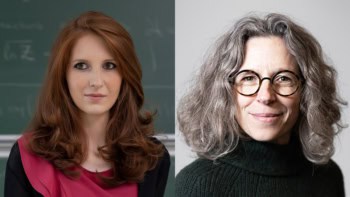
Scientists in the US have shown that plant growth under extreme-warming conditions could be boosted thanks to more nitrogen in the soil. While plant growth is limited by the low level of nitrogen in the soil during modest warming conditions, the study shows that this is not the case in hotter temperatures due a surge of soil microbes that act to boost nitrogen supply. The researchers add, however, that this increase could be curtailed by the greater amount of carbon dioxide in the atmosphere.
Previous studies have shown that elevated carbon dioxide can boost plant growth, whilst increased temperature may have the opposite effect. But few studies have looked at the combined effects of increased carbon dioxide and temperature. Current projections suggest that both atmospheric carbon-dioxide levels and average temperature will increase over the coming decades. To understand what kind of impact this will have on ecosystems, Genevieve Noyce from the Smithsonian Environmental Research Center, and colleagues manipulated growing conditions at Kirkpatrick Marsh in Chesapeake Bay — a tidal marsh environment on the east coast of the USA.
Shoots and leaves
Using infra-red heaters, soil-heating pins and carbon-dioxide chambers the researchers carefully controlled the conditions on several different plots and measured both root and shoot growth of sedge plants over two growing seasons. The ratio of root-to-shoot growth indicates how much nitrogen is available to the plant as shoots put on more weight when nitrogen is readily available.
Under modest warming conditions — 1.7 °C above present day — they found that root growth outpaced shoots, indicating that plant demand for nitrogen outstripped supply. But under more extreme warming (5.1 °C above present day) shoots outpaced roots indicating that there was surplus nitrogen available in the soil. “Microbes generally become more active under warmer conditions, so as the soil warms up, the rate of microbial mineralization increases, which leads to more plant-available nitrogen being added to the soil,” says Noyce.
It is likely that our results apply to other unmanaged ecosystems including grasslands and forests
Genevieve Noyce
However, when elevated levels of carbon dioxide were added to the warming treatment, the response changed, with a swing back towards greater root growth. “As the temperature rises, soil nitrogen supply increases, but as carbon dioxide rises, plant demand for nitrogen also increases, so the net result is going to be the balance between the two,” says Noyce, whose findings are published in Proceedings of the National Academy of Sciences. “It is likely that our results apply to other unmanaged ecosystems including grasslands and forests, provided the soils contain adequate soil organic matter to be broken down by microbes to yield plant-available nitrogen.” Plants may absorb less carbon under climate change
This response to climate change demonstrates the complex interaction between plants, which increase growth even at low levels of warming, and soil microbes that don’t increase their activity until it is significantly warmer. In recent decades rising atmospheric carbon dioxide has boosted plant growth and helped trap more carbon in land sinks. Levels of nitrogen in the soil have usually been the limiting factor to growth. But as temperatures continue to rise microbial activity looks set to boost nitrogen supply, such that it is no longer a limiting factor for plant growth.



